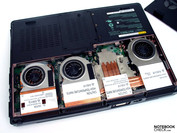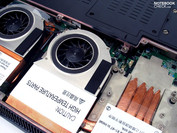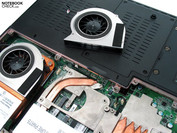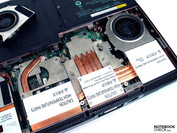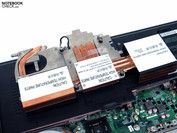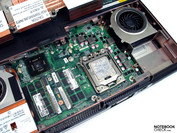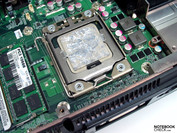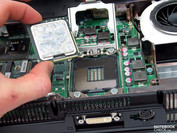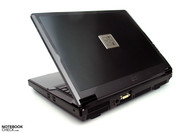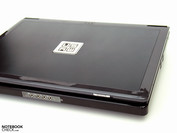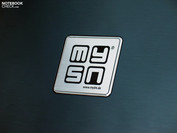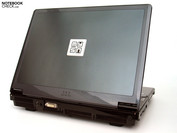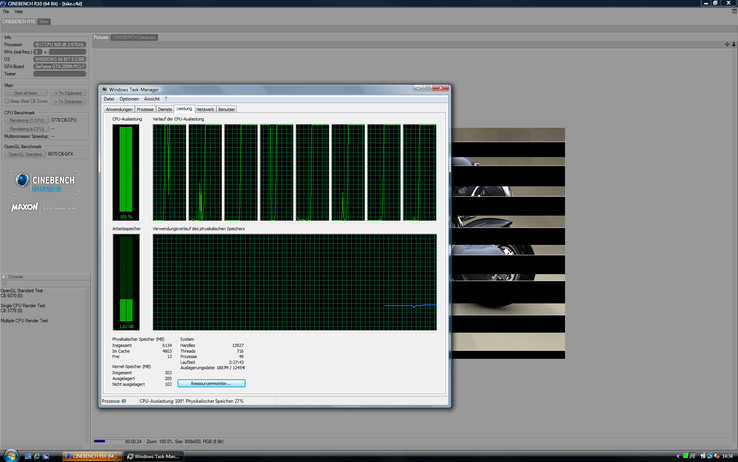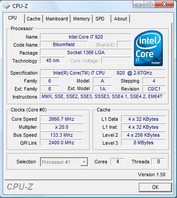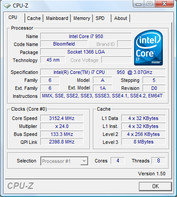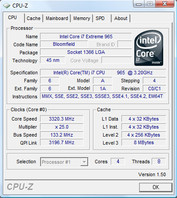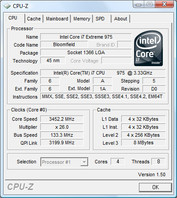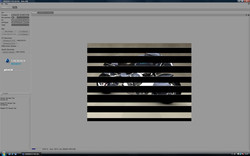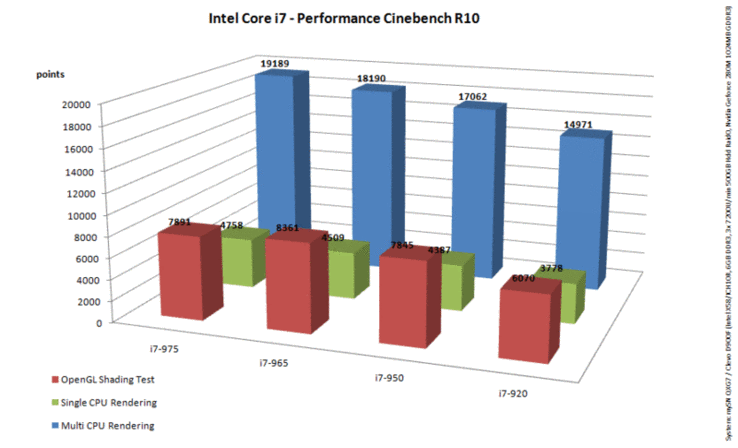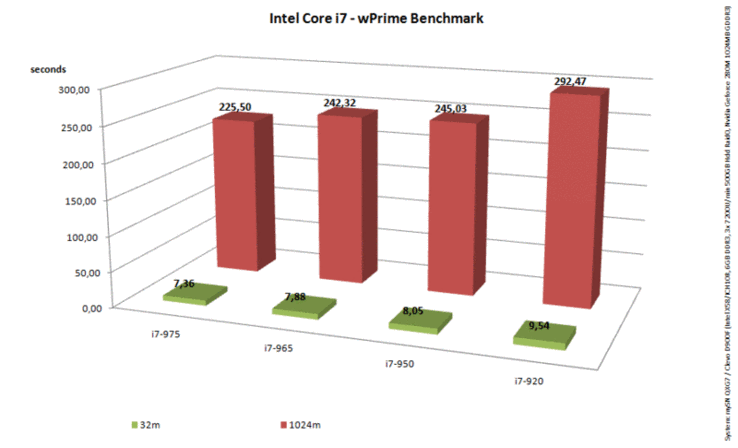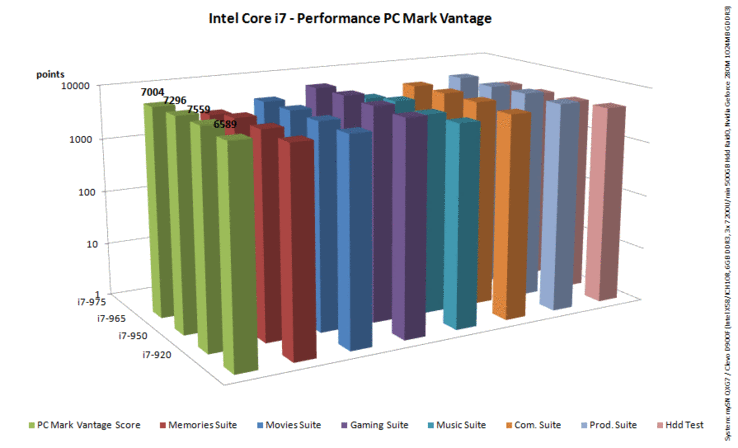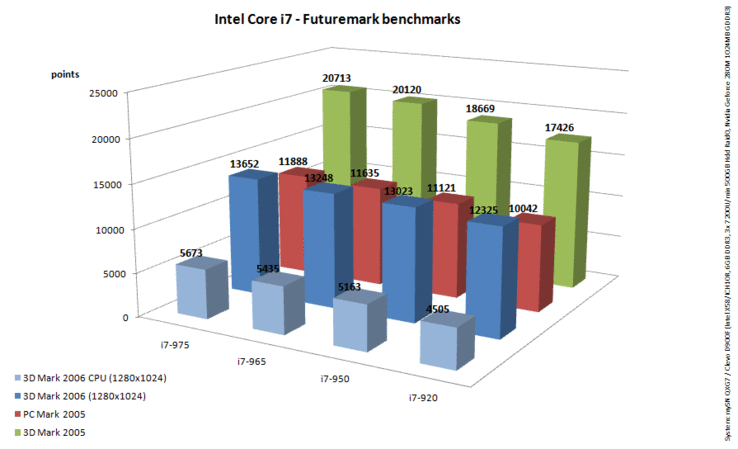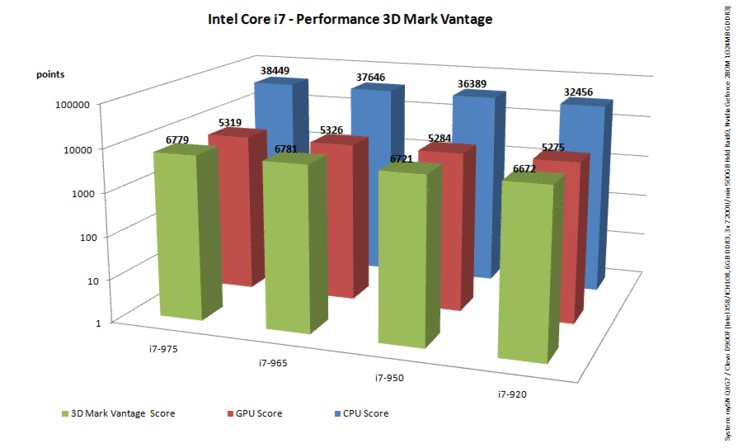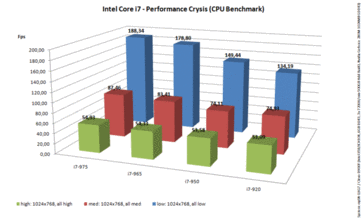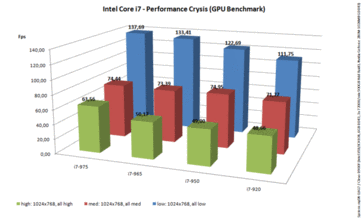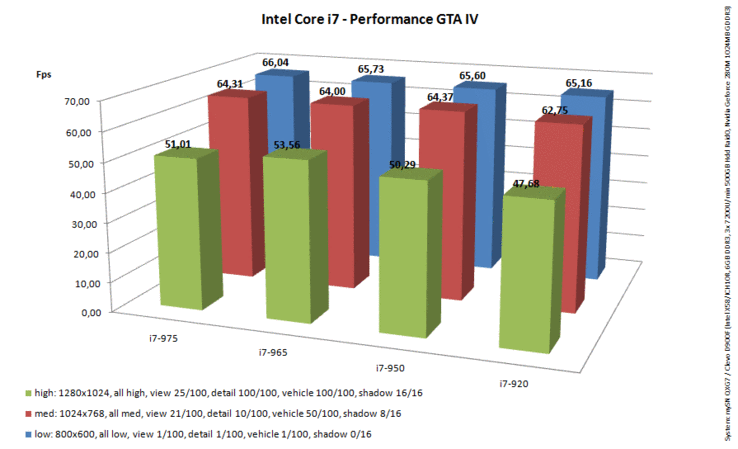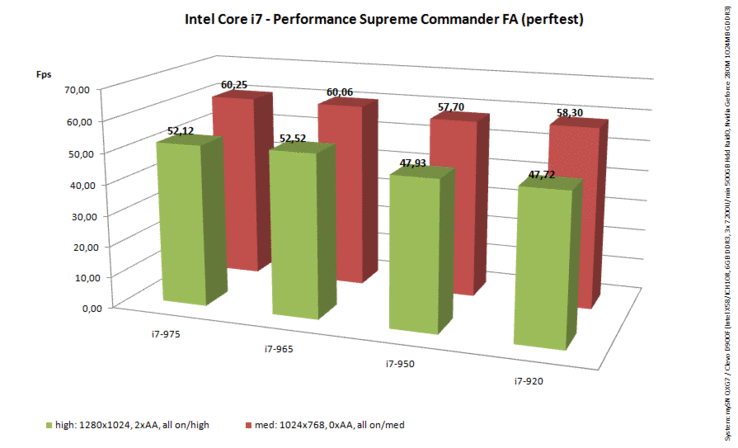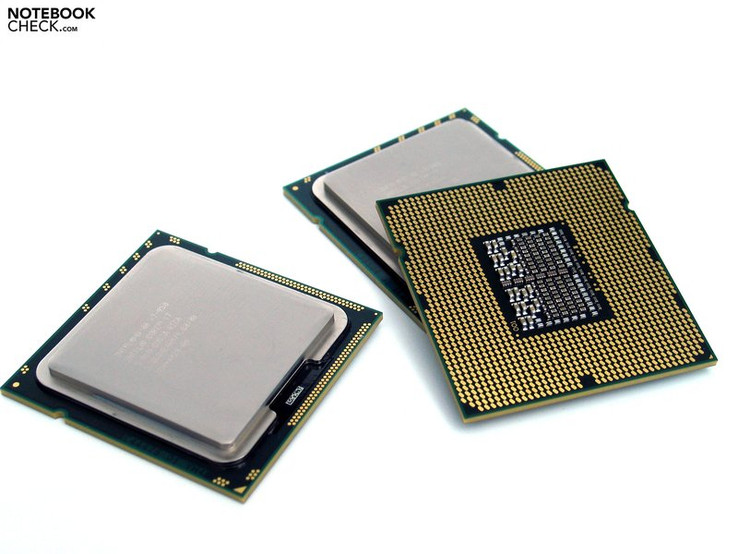Review Intel Core i7 Processors in Notebooks
The need for speed.
Up till now desktop processors often preceded their equivalents in the notebook sector. Although the field of mobile-computing is still growing and has long thrown off its shadow-existence, there won't be anything changing this trend at the moment, probably also because of technical difficulties to be solved. Therefore, many resourceful notebook manufacturers now offer mobile devices with an integrated desktop CPU. The mySN QXG7 notebook (Clevo D9F) belongs to the few currently available models.
In a previous test we have comprehensively dealt with the present Intel mobile Quad Core processors. In the meantime, the models Q9000, Q9100 and QX9300 are in prevalent use in multimedia and gaming notebooks. We will use the occasion of newest rumors about the new, upcoming Intel chips for notebooks, to also take a closer look at the chips predominantly reserved for desktops.
The Test System
The mySN QXG7 (D9F) notebook from the Taiwanese barebone manufacturer Clevo is used as the test platform. The latest edition of the well-known and yet in the meantime already somewhat dated Clevo D900 chassis, based on the Intel X58 ICH10R chip set, can still take it up with even the most state-of-the-art desktop processor technology from Intel.
A CPU exchange is fairly simple to execute on the mySN QXG7 thanks to the barebone concept. A fast access to the main components, such as CPU and GPU, is given after removing a big flap on the notebook's bottom side.
One main element that has to be removed to reach the single components is the huge cooling element with several heatpipes. This alone uses two fans to discharge the waste heat of the i7 CPU and the chip set. The built-in Geforce GTX 280M from Nvidia, which also has a fan, seems almost puny in comparison.
After the removal of the entire cooling system, two occupied memory slots and the built-in CPU become visible. The chip can be removed fairly easily and safe due to the clamp. Different to the previous Quad Core notebook CPUs, the i7 chips don't have razor-thin contact pins. Instead they have obtuse contacts on the bottom side, which are pressed onto the according pins of the board. A wrong CPU placement is excluded by a notch on the edge with the matching counterpart in the fastener.
So, CPU out, new chip in, apply thermal grease and then put everything back together, screw by screw. Basically not really more complicated than with a desktop.
The test system specifications:
- Intel X58 ICH10R Chipsatz
- Intel Core i7 base1366 Desktop CPUs
- Nvidia Geforce GTX 280M 1024MB GDDR3
- 17“ WUXGA Aktive Matrix Glare TFT
- 6GB DDR3 RAM 1066 MHz (3x2GB)
- 3x Seagate Momentus 500GB/7200U (ST9500420AS) RAID 0
- Price: 2,700.00 to 3,400.00 Euros, depending on the selected CPU
Key Information for the Intel Core i7
Currently there are five four-core chips, which listen to the chiming codename "Nehalem". The i7 core, manufactured in a 45 nanometer process, claims a silicon area of about 263 square millimeters. This is a tad more than two Penryn cores (107mm2 each). In the end, the chip accommodates approx. 820 million transistors on the area.
As a result of Intel's "tick-tock" principle, hence the annual reduction sequence in manufacturing process (tick) and a new processor architecture (tock), the Nehalem architecture plays in the same league as the still high-tech Penryn cores in notebooks, but there has been quite a bit of movement in the details, for example in memory controllers and front side buses (which don't exist anymore). To list all architectural details would blow the frame. But fact is that the processors have three DDR3 memory channels available and can therefore be equipped with up to 12 GB RAM (3x4096MB). The memory controller has also been implemented directly into the CPU, with which Intel pulls up to the AMD architecture.
There has also been a significant change in the chip structure in view of cache. The Penryn architecture assigned one L2 cache to two computing cores. This was also the reason why Intel's Core 2 Quad was often named a trivial double dual core. Now, Nehalem assigns an own level 2 cache of 245 kilobytes to every single core. The L3 caches with a size of 8 MB have now become superior. Insiders will recognize certain similarities to the "Phenom X4" core from the competitor AMD.
As still known from the time of Pentium 4, hyper-threading technology is experiencing a revival. A virtual core can now be assigned to a physical one, which can provide for a velocity bonus in certain cases. The "8 cores" are, for instance, visible in the system performance in Window's Task Manager.
Intel also offers so-called "Extreme" versions of the i7 chips, as already in the core 2 duos. Apart from the higher clock rates, these differ in performance in the so-called QuickPath Interconnect (QPI), so the connection with the chip set (Northbridge), noted in giga-transfers per second (GT/s).
A main feature of the i7 is the "Turbo Boost" function, which can overclock the single cores when required. This has the advantage, especially in applications, that the multi core architecture isn't completely exhausted. This function has a further difference in comparison to the standard chips of the Extreme CPUs: These allow a free selection of the Turbo Boost multiplier and even the Thermal Design Power (TDP) value. An overview of the latest single chips:
| Name | Clock Rate | L2-Cache | L3-Cache | QPI | Price(Intel, 1k units) |
| Core i7 920 | 2.66 GHz | 4x256 KB | 8MB | 4.8 GT/s | $ 284.00 |
| Core i7 950 | 3.06 GHz | 4x256 KB | 8MB | 4.8 GT/s | $ 562.00 |
| Core i7 965 | 3.20 GHz | 4x256 KB | 8MB | 6.4 GT/s | $ 999.00 |
| Core i7 975 | 3.33 GHz | 4x256 KB | 8MB | 6.4 GT/s | $ 999.00 |
Synthetic Benchmarks
Cinebench R10
As experience shows, the multi core processors reach the best result in the Cinebench R10 benchmark test. This simulates, for instance, image rendering with help of one or all available cores. In the single CPU test, the benched i7 CPUs could reach results of 3778 points up to 4758 points with the Extreme 975 CPU. Therefore, they all play in a league above a T9800 or the X9100 Extreme CPU, in comparison to present notebook Penryn cores.
But then it gets down to business in the Multi CPU test, at which the i7 processor can develop its full strength. In opposition to the eventually suspected four synchronistic threads, you can take pleasure in eight parallel processes, which handle pending tasks quickly - thanks to hyper-threading.
The result is impressive. The strongest i7 CPU leaves those chips, even the presently most efficient for the mobile field, the quad core CPU, the QX9300 (approx. 11k points), far behind with results of 14900 up to 19200 points. The QX9300, built into Alienware's M17x, achieves merely 13,000 points at an overclocking to 3.06 GHz and can't even come close to the level of the weakest Core i7-920 CPU.
The noted results in the OpenGL Shading test turn out to be a bit fluctuating. On the one hand, the expected performance increase with a boost in chip efficiency could be noted, on the other the result of the i7-975 CPU turns out too low. Due to the significantly larger impact of the graphic card, these benchmarks are to be seen as conditional.
wPrime
The wPrime benchmark test is a multi core capable program, which notes the CPU's velocity for a standardized, complicated computation. Hyper-threading is also considered.
The expected increase up to the strongest i7 CPU showed itself in the test, whereas the biggest performance boost could be observed between the i7-920 CPU and the i7-950 chip.
PC Mark Vantage
The most actual application benchmark from Futuremark, the PC Mark Vantage, also delivered such an overall rather unsatisfactory outcome-consistency. The i7-950 chip reached the top score with around 7500 points. The most efficient processor, the i7-975, produced only about 7000 points. The partially very varying single results in the areas of Memories Suite, Music Suite, Productivity Suite and finally in the HDD test was also conspicuous.
Clevo M980NU (X9100/GTX280M), the Alienware M17 (QX9300(ATI 3870X2) or even the Cybersystem QX18 (T9900/GTX 280M SLI)
3D Marks / PCMark 05
The common 3D Mark 2005 and 2006, as well as the PCMark 2005 benchmark test were also looked at more closely. The established results relate proportionally to the velocity of the single chip.
The test system reached between 10000 and 12000 points in the PC Mark 2005, depending only on the applied CPU. This is a plus of around 20%. In comparison to notebooks of our test pool, the mySN QXG7 with i7 processors looks good once again. The cybersystem Q18 reached almost 9000 points. Even the Alienware M17x fell behind, as expected: 9615 points.
The test system provided a good result in the 3D Mark 2006 benchmark test with about 13000 points, but with a margin of around 1300 points the influence of the CPU turned out much milder and leveled of at approx. 10%.
With the lower impact of the processor, it's not surprising that the mySN QXG7 test system can't break our previous top scores. Bolides, such as the Asus W90 (T9600/ATI 4870X2) or even the Alienware M17x (QX9300@3.06GHz/GTX 280M SLI)), reached results of 14k to 15k points.
Gaming Performance
Even if the CPU usually isn't the most important factor in gaming, and a smooth frame rate is dependant primarily from the efficiency of the built-in graphic card, we did take a closer look at the present Core i7 processors in a range of current games.
Crysis
Since the release of this shooters, Crysis is deemed to be THE hurdle for efficient multimedia and gaming bolides. Not much has changed since the game's release almost 1 1/2 years ago.
The game-integrated benchmarks (GPU and CPU test) were used for our comparison. The listed values correlate to the best result of 4 runthroughs. A resolution of 1024x768 pixels and the presettings low/medium/high were used for benching.
It became obvious that the CPU's influence on the reached performance decreased as the requirement of graphic increased with the integrated CPU benchmarks as a span of 134-188 fps could be observed in low details (approx. +50%) and the results remained rather constant (53-55 fps, +4%) at high details.
The GPU benchmark test showed a similar classification, but we could note an unexplainable bolter of the i7-975 CPU at high details.
GTA IV
Barely any other game currently shows a comparable resource-devouring in regards to the CPU as the latest release of the Grand Theft Auto series. Our expectations are accordingly high in view of performance.
All four test configurations practically stayed the same at low settings and only deviated decimally from each other. The results at medium detail level were also similar, whereas the results didn't vary more than 1.5 fps from each other.
Conclusively, the highest tested resolutions didn't present any significant changes, either. The i7-975 CPU interestingly couldn't reach the level of the i7-965 Extreme CPU. The mySN QXG7 has a lead with values of a bit over 50fps in this game. The Alienware M17x merely reached 45.23 fps in our test configuration (QX9300@3.06GHz/GTX 280M SLI) despite the more efficient GTX 280M SLI graphic solution. This confirms, once again, the importance of an efficient CPU in the case of GTAIV.
Supreme Commander – Forged Alliance
The real-time strategy game Supcom-FA might already count as outdated, but the game still needs a mass amount of computing power from the CPU with its unconceivable size of up to 80 square kilometers in multiplayer battles, since the player's numerous units and the AI wants to be maneuvered over the landscape and also want to be controlled intelligently to an extent.
As Supreme Commander also has an integrated performance test, which simulates a scripted multiplayer battle, we fell back on this for comparing results. In medium graphic details, the achieved results were together within 3 frames. An increase of graphic requirement to high details enlarged this span slightly to approx. 5 fps.
Verdict
Generally, massive similarities to a previous test of current Intel Core 2 Quad mobile CPUs to the latest Intel Core i7 range could be established. Once again, the amount of support for multi core processors in the single application ascertains the score of the single CPU.
However, the performance head start of the Nehalem architecture becomes obvious, which leaves hope for a strong efficiency boost, as well as a further distribution of the multi core technology in upcoming notebook CPUs. The Turbo Boost feature also makes it possible to give a good performance at tasks, which have only a few cores available in opposition to the common Core Quad chips.
First rumors are saying that the new quad core chips for notebooks with the pseudonym "Clarksfield" and the 32 nanometer dual core processors with the equally exciting codename "Arrandale" are supposed to be released on the market in the third or fourth quarter of 2009. The new range is then to be called "Calpella" and replace the current "Montevina" basis. Details about this, as well as a detailed schedule, can be found in this news report.
Many thanks to Schenker-Notebook, who kindly provided us with the test device. You can configure and purchase it here as well.





